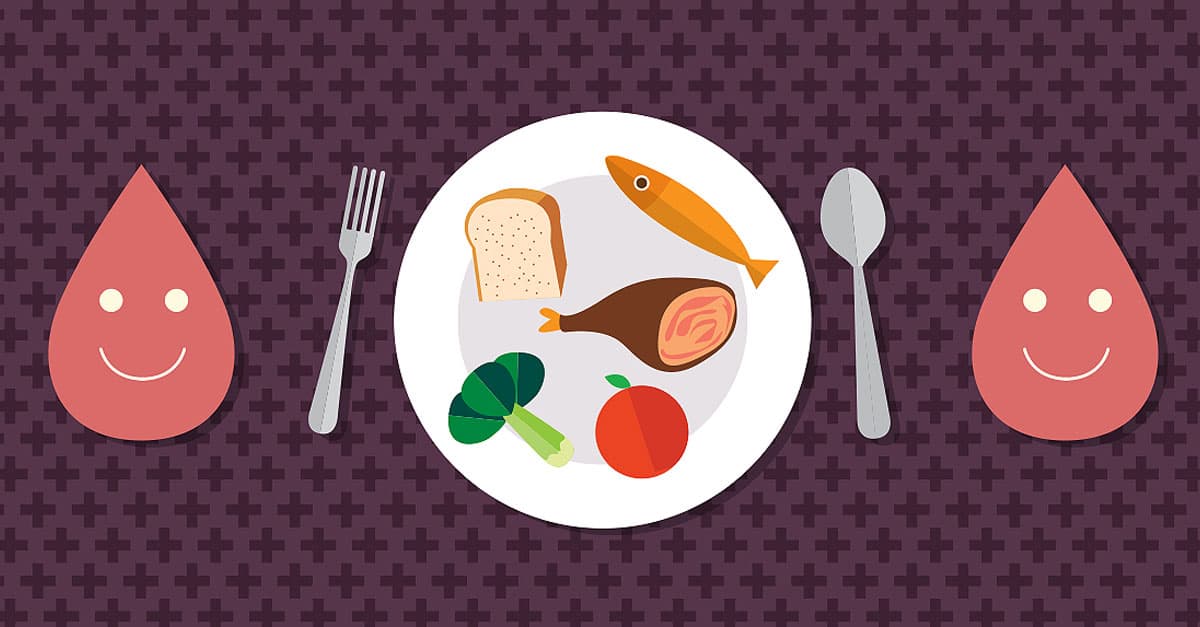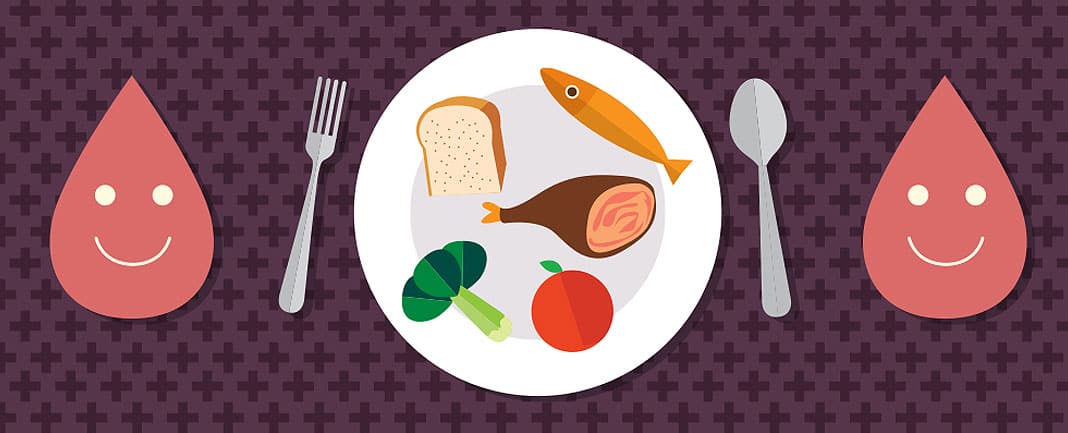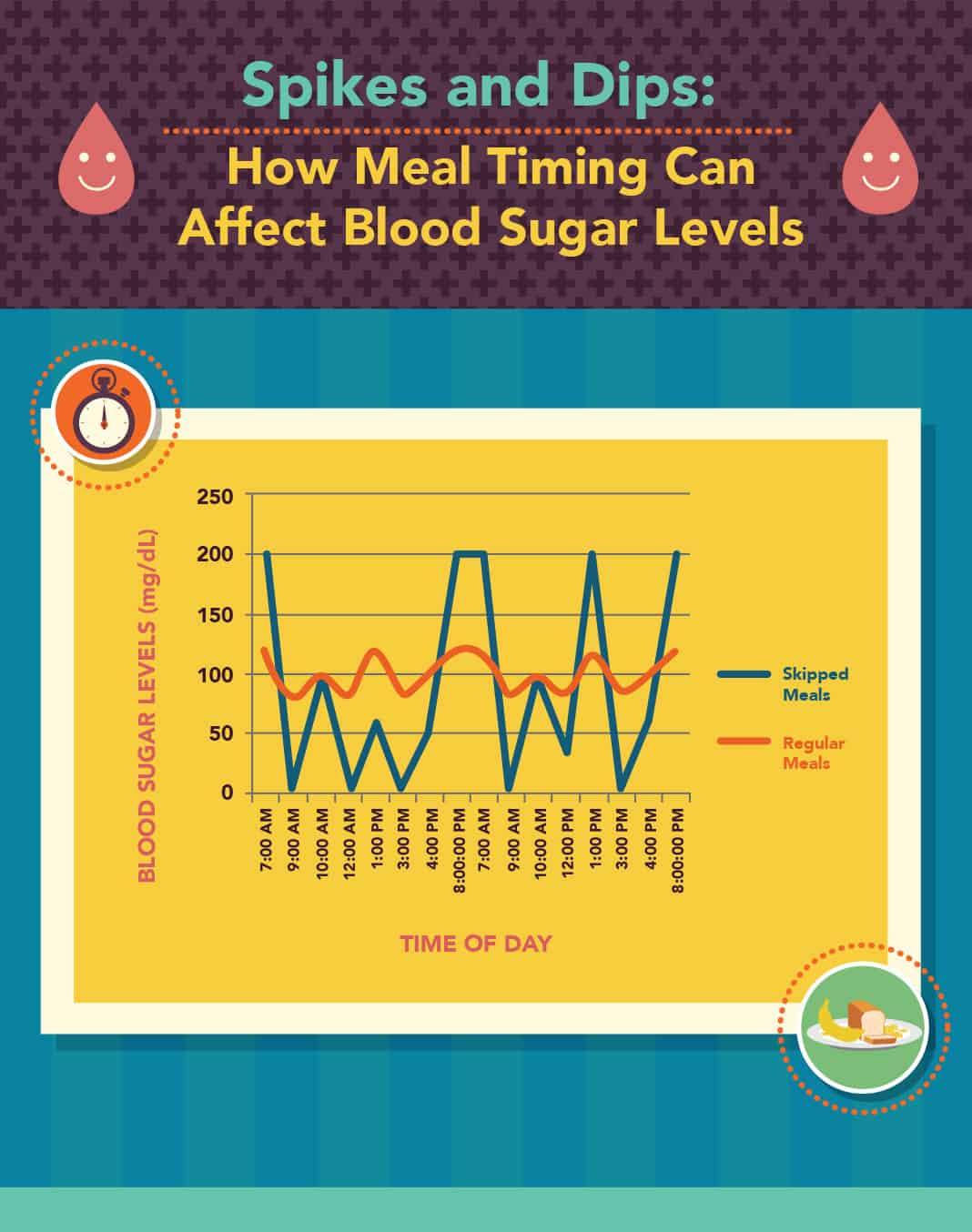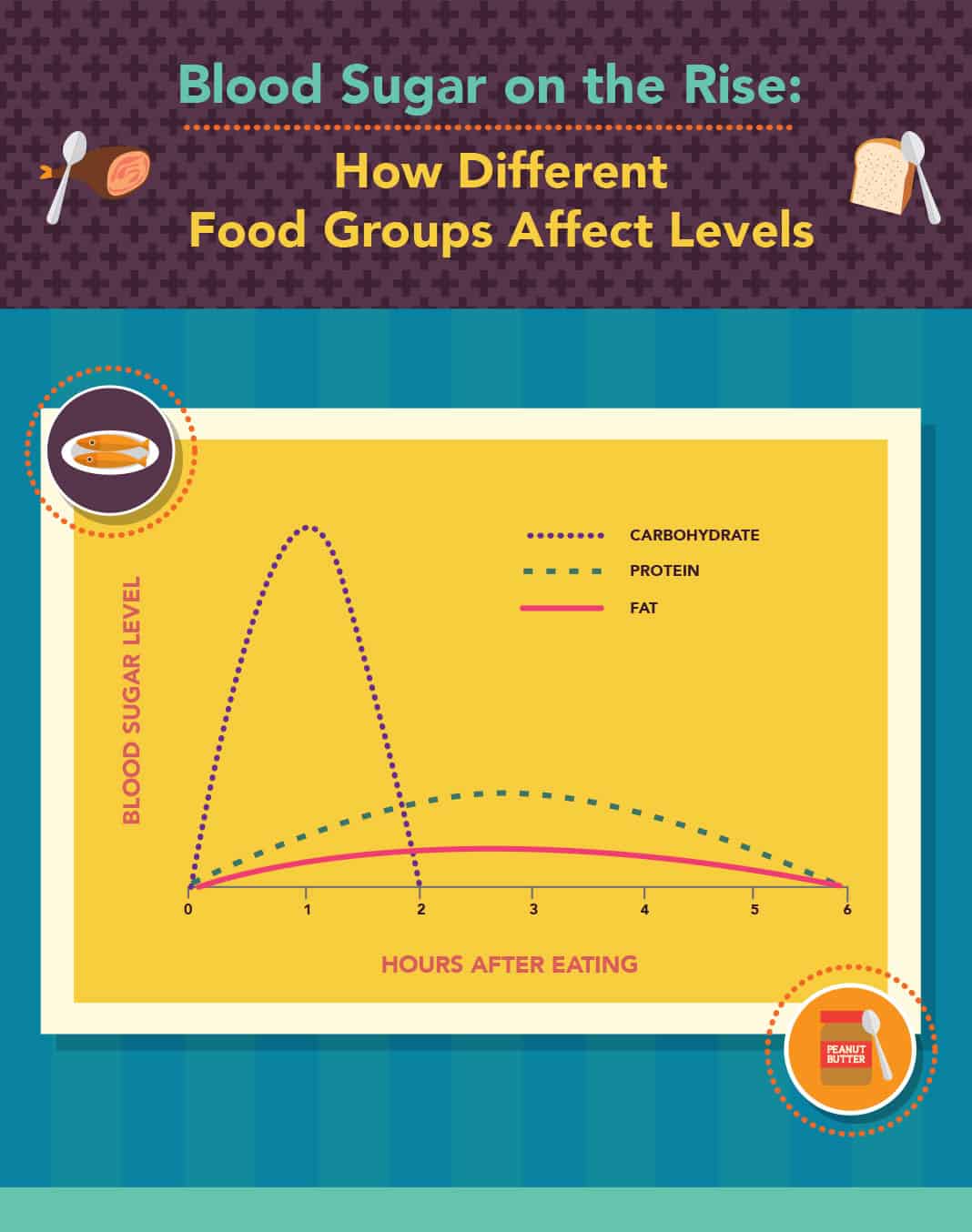The idea that food provides us with energy is pretty simple, but the process of turning breakfast, lunch, and dinner into fuel is a little more complex. Here’s a very basic timeline:
- You eat and your body digests the food.
- The carbohydrates are turned into sugar.
- The sugar gets absorbed into your bloodstream (this is your blood sugar).
- Insulin is released and helps move the sugar from your blood into body tissue to be used as energy.
However, for people with diabetes or those at risk of diabetes (a condition often called insulin resistance) that last step doesn’t go as planned. The result is elevated blood sugar levels. Blood sugar fluctuations are not only responsible for the immediate symptoms of diabetes such as fatigue, light headedness, irritability, and increased thirst (just to name a few), but also for long-term health issues including increased risk of cardiovascular disease, kidney problems, and neuropathy. When you have diabetes one of the most beneficial things you can do for yourself is to try to keep your blood sugar levels as steady and close to normal as possible.
Maintaining healthy blood sugar levels may require some simple lifestyle changes, but it’s not impossible. In fact, there are a few easy steps to take every day to get—and stay—on the right track.
1. Eat Three Square Meals (and Then Some)
In other words, make time for healthy snacks and try not to skip meals. A long period of time during waking hours without eating means the body has no source of fuel (aka glucose) and therefore the levels of sugar (aka glucose) in the blood go down. Among other things, low sugar levels can increase appetite. The longer the period of hunger, the more tempting it is to eat larger portions of food. This results in an influx of fuel hitting your digestive system all at once. Consequently, blood sugar levels spike. If this pattern occurs daily, blood sugar levels look something like this:
Alternatively, eating every three to four waking hours prevents the cycle of dips, overeating, and spikes that occur in blood sugar levels after skipped meals. Within a couple hours of waking, have breakfast, then a small snack two to three hours later, followed by lunch two to three hours after that, another small snack after another two to three hours, then dinner two to three hours after that. Keep in mind, snacks are just that—snacks, not mini meals. Aim for around 150 to 200 calories. Try a piece of fruit and fat free Greek yogurt, whole grain crackers and peanut butter, or even a quarter cup of nuts.
2. Go Green
Leafy greens are low in calories and carbohydrates and therefore have very little impact on blood sugar levels. Leafy greens are an especially great choice for those who find they have a hard time filling up. A big bowl of raw or cooked kale, spinach, or other dark leafy green can serve as the base of a salad or a delicious side dish that provides fiber, vitamin A, and other nutrients but won’t raise blood sugar.
3. Incorporate More Food Groups
Foods containing fiber, protein, and healthy fat digest slowly and therefore slow down the speed at which glucose enters the blood. This in turn results in a slower, steadier, less severe rise in blood sugar. When choosing meals and snacks, be sure to include some items that contain these nutrients. Some examples include nuts, beans, avocado, Greek yogurt, and whole grains.
4. Move More
Activity helps move sugar in the blood into the muscles, which lowers blood sugar levels. Incorporating some form of daily physical activity into your routine is one way to help maintain blood sugar levels. Hitting the gym everyday isn’t necessary so long as you make it a point to move a little. In fact, a brisk walk once, or ideally a few times a day, can do the trick. If you can’t find time to work out for 30 or 40 minutes at one time, divide it up. Complete 10 minutes of at-home bodyweight exercise, such as jumping jacks, jogging in place, or push-ups, when you wake up. Squeeze in a 10-minute walk during a lunch break and end with a 10-minute walk around the block as soon as you get home.
5. Have an Emergency Snack on Hand
Even the best planned days and diets can get off track by a long line at the bank, a traffic jam, or extended meeting. In case you get stuck somewhere unexpectedly, always have an emergency, non-perishable snack nearby in your purse, glove compartment, or desk. Whole grain crackers or nuts make good choices.
These simple steps are nothing drastic, but can make a big difference blood sugar difference over the short and long term.



